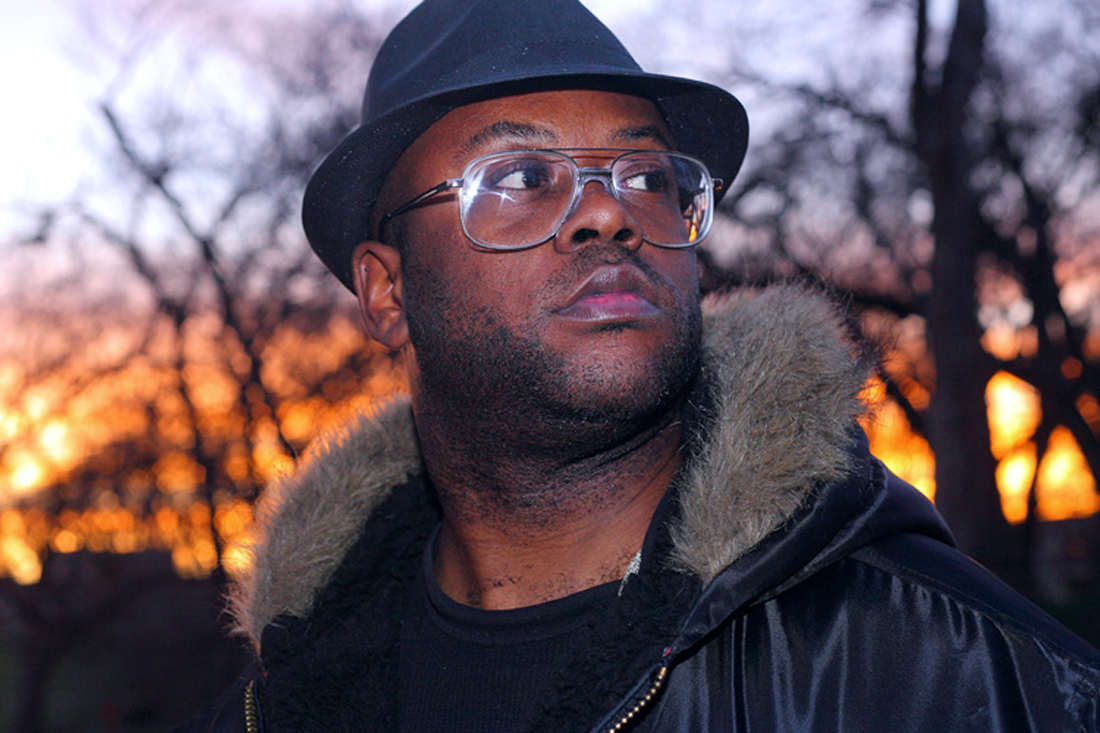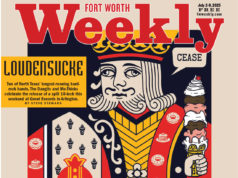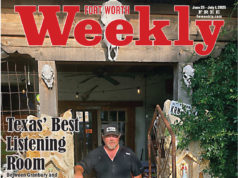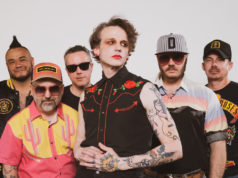Fort Worthian Phil Ford, a.k.a. BLKrKRT (“blacker karat”), is a prolific beat maker/DJ and clothing designer who recently released two albums, Fuses II and Black Super Moon, adding to his already-extensive catalog. Purveying a hip-hop-centric brand of neo-soul-inspired electronica, Ford is one of a kind and just hitting his stride. We caught up with him recently at a local pub to talk about his work.
Fort Worth Weekly: I remember from back in the Wreck Room days [circa the early ’00s], you and some cats used to come out and spin on Wednesday nights, at a sort of DJ open-mic. Is that where it all began for you?
Phil Ford: Well, I was kind of doing it then, but I wasn’t really digging into it. I wasn’t making those libraries of samples that I have now. Now I can just think of a song, go to the internet, and –– boom –– start working with it. And all that has come through this one filter of technology. It readied me for the choppy sound. The reason I left out all the vowels in the name [BLKrKRT] is because that’s what’s happening to the [source material]. It’s being chopped up to the point that, in a measure, it could be the first eight seconds of a song and the middle of its second minute, combined into my song. It’s so chopped up.
Weekly: Tell me about Fuses II and Black Super Moon.
Ford: I took a hiatus to learn about fabrics, and while I was doing that, something said, “You know, you don’t have to completely give music up.” So I said, “I’m gonna create a whole bunch [of beats and melodies] from scratch: no samples, just jammin’ with myself.” I had already done Fuses I … so I just wanted to keep Fuses II [mellow] like, “I’m not from New York, but I know what this hip-hop shit is.” When I went to New York … I’m watching New York Undercover, the coffee’s really great, I’m really lovin’ life, you know? How do I give that to people?” So that’s where Fuses II came from. A friend of mine said, “You really gotta tap into your own shit.” Fuses I was more like my image outerwear, my projection. Fuses II is more like, “The projection ain’t real, so find the realness.” I love jazz improvisation and fusion. It sounds like randomness, but it’s actually very calculated and direct. … Basically, what I wanted to do was make loops or feels that are closer to mantras, you know what I’m sayin’? You have that great feeling, and it doesn’t have to go away.
Weekly: Does living in Fort Worth inform your work at all?
Ford: I have a bunch of friends here that front bands right now, and, I mean, they’re great, but the competition is stiff, because everybody’s doing it. I’m trying to transcend all of that, and I just thank God that I wasn’t held back by any of those [traditional] ideals. I could just be the outsider artist.
Weekly: And that gives you more flexibility?
Ford: Way more. I told myself, “You can do whatever, but, well, it’s gonna take you two or three more years because, conceptually, you don’t know what you want to do. You don’t really have to face the critics.” There’s nothing out there to compare [my music] to, so when people do vibe with it, it’s very important to me. … It’s so personal. I really do all those beats for myself, like everything is something that I’m using somewhere in my own life, and I’m just contributing it because I feel like that’s my way of saying I’m alive. I’m a part of this with y’all, and this is what we’re doing.
Weekly: What materials are at your fingertips when you’re composing? For instance, Dr. Dre’s setup on The Chronic II, with all his records in The Lab, Q-Tip on his Amplified album, Dilla –– all these cats bared it all to show process. What’s your setup?
Ford: I love working from nothing. I mean, having absolutely nothing on my plate when I sit down. No records, nothing. I like being able to sit down and just basically say, “OK, where we at today? What’s happenin’?” Turn the computer on, and it’s just the computer, MIDI controller, and me. I used to have all these crazy keyboards … all this stuff. And for a while, that defined me. But after awhile it seemed derivative. … I wanted to become way more conceptual, and when I did that, it freed me. The sound is the authority. That’s my whole mode. You just program yourself with one thought: I wanna make something dope.
Christopher Blay is an award-winning North Texas installation artist. He just completed “Ark on Noah Street,” a massive vessel on the corner of Noah and North Cliff streets in Dallas.












